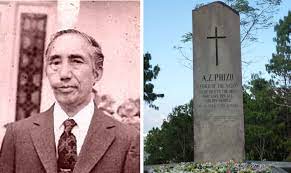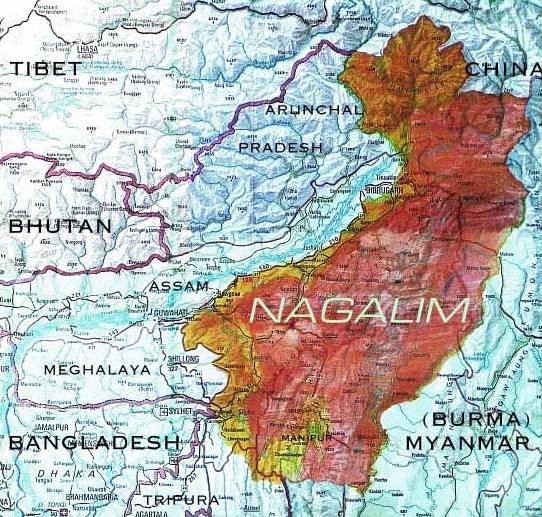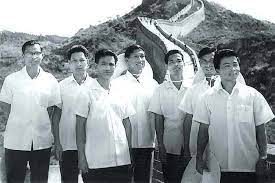The recent accidental killing of civilians in an operation by armed forces in Nagaland’s Mon district has once again sparked a debate over the Armed Forces (Special Powers) Act of 1958. The Home Minister said that the army had received information about the movement of extremists in that area. On this basis on the received intel, 21 commandos ambushed the suspected area.
A vehicle reached there, soldiers signaled it to stop but it tried to run away. Suspecting the vehicle to be militant, the vehicle was attacked which caused the death of 6 out of 8 people in the vehicle.
It was later found that it was a case of mistaken identity. Two others who were injured were taken to the nearest health center by the army. On receiving the news, the local villagers surrounded the army unit, torched two vehicles, and attacked them. Due to which one soldier was martyred and many soldiers were severely injured.

The security forces had to resort to firing for self-defense and to disperse the crowd. This resulted in the death of 7 more civilians, injuring some others. The local administration police tried to normalize the situation. Following the incident, on the evening of December 5, an agitated mob of around 250 people ransacked and set ablaze the Company Operating Base (COB) of the Assam Rifles in Mon town, he said. The Assam Rifles had to open fire to disperse the crowd. Another civilian died as a result.
This unfortunate incident cast a shadow on the 24-year-old Naga peace process and threatened to disturb the military-civilian ties built over the last two decades.
This incident also lead to a renewed demand to repeal the so-called draconian AFSPA law in the northeast. The northeast has been witnessing extremism and disturbance for the last many decades, where AFSPA law gives the armed forces the power to maintain public order in these “disturbed areas”.
What is AFSPA?
AFSPA authorizes the armed forces to use force or even open fire after warning a person found to be in contravention of the law. The AFSPA also enables the armed forces to enter or search premises and arrest a person without a warrant and ban the possession of firearms if “reasonable suspicion exists”.
As far as the northeast is concerned, the AFSPA is enforced in Assam, Manipur, Nagaland, and a couple of districts of Arunachal Pradesh. However, it is important to understand the underlying root cause of the disturbance in Nagaland, which led to the enforcement of AFSPA.
Why Nagaland is disturbed?
Past Indian independence, there were many states under the agreement with the British, which did not want to join India. At that time the Naga National Council, like the Muslim League, was not ready to join the Indian state. The NNC was formed in 1946 by Naga leader Angami Japu Phizo.
He was demanding that Nagaland should be given the status of a separate country. At the same time, he claimed that Britain had included many areas of Nagaland in Assam, those areas should be included back in Nagaland. The then Prime Minister Jawaharlal Nehru rejected their demands, calling the Naga area a part of Assam.

In 1956, challenging the Indian government, Phizo formed the Naga Federal Government (NFG). These people went underground and started running their separate government parallel to the Government of India. Phizo also formed the Naga Federal Army, which started taking violent action against the Indian Army and other forces. Later in 1960, a 16-point agreement was signed between the Government of India and the leaders of the Naga People’s Convention.
After this agreement, Nagaland became the 16th state of India on December 1, 1963. In 1964, elections were held here for the first time, but the dispute started on the points on which it was agreed, and this dispute continues even today.
The biggest reason for the controversy is the demand of the Naga people that the parts of Nagaland included in Assam should be returned to the area of their claim. Naga leaders say that this land belongs to their tribe and Prime Minister Nehru had promised to return it.
The Greater Nagaland ‘Nagalim’
NSCN (IM) is among the most violent Naga terrorist groups. NSCN (IM)’s long-term objective is an establishment of a Nagalim (Greater Nagaland), a so-called rightful homeland of Nagas. This hypothetical state consists of all the Naga-inhabited areas of neighboring Manipur, Assam, Arunachal Pradesh, and some parts of Myanmar.

The proposed Nagalim spreads over approximately 1,20,000 sq. km. in contrast to the present State of Nagaland that has an area of 16,527 sq. km. The NSCN-IM maintains that at present Nagalim has been subdivided by the Government of India into four different administrative units: Assam, Nagaland, Arunachal Pradesh, and Manipur. The concept of Nagalim has created unrest among the local tribal groups of neighboring states, as it threatens to include large chunks of their territories.
The Chinese role in Nagaland disturbance
Since the late ’50s, China has been showing Northeastern Indian states as their territory on its maps. Beijing has been interested in Nagaland for many decades, and it allowed the meeting of Naga insurgent leaders Kaito Sema and Phizo to meet on their soil and conspire against India.

There has been mutual cooperation agreement between the “Federal Government of Nagaland” and the “Peoples Republic of China”, and China allowed a permanent representative of the FGN in Beijing. The Chinese government inducted multiple batches of Naga youths and provided them training.
The Communist Party of China maintains close relations with all the terrorist groups. As per the agreement between Terrorist groups Chinese government, the CPC will maintain diplomatic relations and offer all assistance to them.
Pakistan’s role in Nagaland disturbance
Pakistan has been actively providing financial, arms, and political support to the Naga insurgents. Pakistani spy agency ISI empowers Naga groups so that they can orchestrate terrorist acts and revolt against India. Pakistan tried its best to foment Naga trouble and disturb India by straining its economy and diverting the troops to North-East.

In the early 1960s, Kaito Sema, the chief of terror group Naga home guards went to Pakistan and acquired arms and training to carry out terrorist activities in India. Naga leader Phizo visited Pakistan several times, and once he said that “in case of a plebiscite, Nagas would also have the choice to join Pakistan. Several Naga groups visited Pakistan between 1962 and 1968, to procure weaponry and monetary assistance.
Erstwhile East Pakistan (now Bangladesh) had trained more than 2,500 Naga terrorists and supplied huge amounts and arms to create unrest in Nagaland. As per several claims, Pakistan’s Inter-Services Intelligence has built multiple training centers for Naga terrorists in the jungles adjoining Manipur, Myanmar, Bangladesh, and Thailand.
Modi government had made an agreement in 2015
After becoming the Prime Minister in 2014, Narendra Modi intensified the efforts to pacify the Naga dispute. And in 2015, the central government signed an agreement with the Isaac Muivah faction of the NSCN.

In the year 2017 also seven rebel groups like the Naga National Political Group were included in the peace agreement.
Conclusion
The Nagaland issue is an extremely sensitive one, and the Indian Government must take utmost patience to control the situation. We are amid a 2.5 front war, where China and Pakistan are trying their best to provoke our internal adversaries to create unrest in India. Now, due to this recent killing incident, several groups and even the state governments have joined the chorus to repeal the AFSPA.
Several Naga terrorist groups have already issued a stern statement and threatened that ‘blood of innocent will be avenged sooner or later. Well, this is another tough challenge for the Modi government, and it will be interesting to see how it counters it.
Are u qualified to call it a draconian law.. stay within ur limits
Thats why we wrote it as ‘so-called’ draconian law. Its a sarcasm if you understand.
For how long will we play defensive. Like Israel ,why don’t we exterminate these terrorists. It’s because we are weak.How much is the strength of terrorist. Why are we still not able to control it.We got to introspect .And take a final decision.